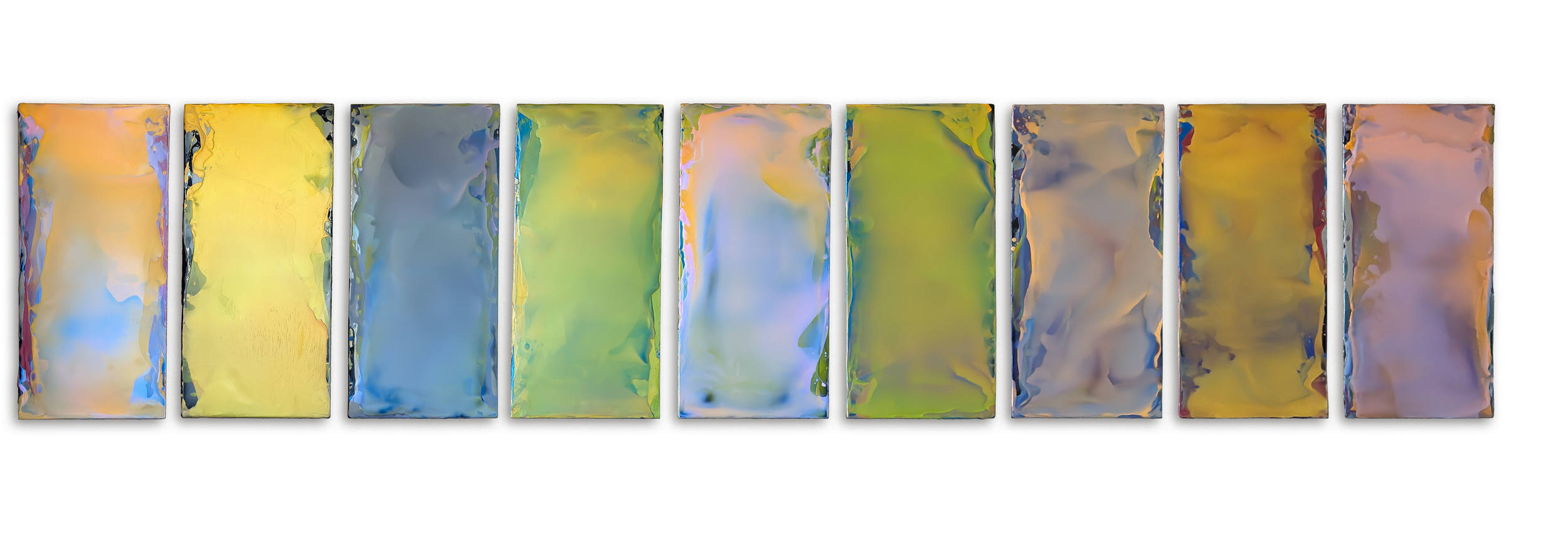James Kendall Higgins is a California artist whose painting and sculptural practice centers on the psychological affect of surface and abstraction. Multiple layers are developed in pigments, polymers and resins that give us a window into spaces in which we find ourselves suspended. His current body of work explores the tenuous relationship between looking and seeing, employing materials like silver emulsion to build up surface and pigment while obfuscating the viewer’s reflection. Refusal is a key conceptual framework for these objects, as they borrow from the processes of silver gelatin prints made in the darkroom. They function as unfocused lenses, giving the suggestion of an image while distorting the figurative. Higgins’s interests in blown glass and analog photographic practices are foundational to his art practice.
Higgins’s works are quietly queer, eschewing easily identifiable signifiers in favor of distortion and a refusal that subverts the Lacanian Mirror-Stage. Akin to the darkroom process, we look to the surfaces of these works and watch them develop in real time: a continually mutable, unfixable image, unique to each viewer. Higgins troubles the process of looking, seeing, and recognizing. We are to look into these portals, but not see through them, instead focusing on both the abstraction and obstruction of the careful layering of materials that convey a psychological barrier to self-recognition. They are reminiscent of Hiroshi Sugimoto’s Theaters series: the further the work is developed, through the continued layering of silver emulsion on a surface, the more distorted and concealed the image that we as viewers would otherwise see becomes.
While reflective surfaces are often used to expand spaces and provide the viewer with an image of themselves for practical or pleasurable reasons, these works by Higgins function almost in reverse. They distort the space through both the reflective surfaces and the sculptural nature of the forms. Reflective surfaces are often intended to be flat and unobtrusive, seamless, yet here Higgins’s works project into the room, intentionally taking up space, interacting with it. The surface allows them to be integrated into a space by reflecting qualities of the room around it, but the psychological charge prevents them from being merely decorative: they are contemplative. While many of his earlier works feel illustrative of the sublime, the Silver Emulsion series feels more intimate, melding with the space while the viewer projects their own psychological state onto the surface. With an extensive background in design across disciplines, he attends to the malleability of the psychological affect of his works in a given environment. Higgins’s practice seeks to bridge the white cube of gallery and museum spaces with domestic interiors: developing discursive works that engage and react to the environments within which they reside.

